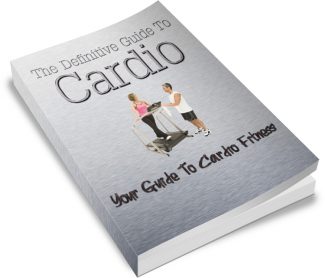
 License Type: Resell Rights
License Type: Resell Rights  File Size: 558 KB
File Size: 558 KB File Type: ZIP
File Type: ZIP
 SKU: 55092
SKU: 55092  Shipping: Online Download
Shipping: Online Download
Ebook Sample Content Preview:
Stair Climber and Gliders - What These Do for Your Workout Routines
There are a lot of different types of home exercise equipment for you to choose from these days. Among them are a couple of more recent additions, stair climbers and gliders. While they are very different from each other, they can both add a new dimension to your workout routine.
The notion of stair climbing itself is not new. Many of you probably have memories of a high school or college coach making you run endlessly up and down the bleachers during gym class. Now, with stair climber machines designed to make you step up the way you would on stairs, you can get the same sort of workout while staying in one place.
Stair climbing not only provides an aerobic workout, but also helps to tone the muscles in your calves, thighs and buttocks. With most stair climbers, you can adjust the stepping rate speed and resistance, which gives you control over the intensity of your workout.
(It's generally considered a good idea to start at a lower step rate, work your way up to a higher rate that will elevate your heart rate to a level within your target heart zone, alternating between a slower, deeper step and a quicker, shallower step; then gradually slow down again at the end out your workout.) You can also read, watch TV, or listen to music while you exercise on the stair climber.
One of the disadvantages of stair climbing is the possibility of hyperextension injuries to the knee if it is overextended. You should also be careful not to place too much weight on the arm supports, as it puts strain on your wrists and reduces the effectiveness of the cardio side of things. Remember to stand straight, since leaning forward while stair climbing can put undue strain on your lower back. Also, if you have cardiovascular or orthopedic problems you should check with your doctor before using a stair climber.
Different types of stair climbers include cylinder-driven, wind-driven, and computer-controlled models. Any of these different stair climbers may include many other options, such as programs that simulate hill or mountain climbing, or monitors that calculate your heart rate, calories burned, or total steps climbed. Like most of the larger exercise equipment, prices range from a few hundred to several thousand dollars, depending on quality, brand name, and what options you choose to have included.
Stair climbers target your legs and cardiovascular system, so it would probably be best for you to combine stair climbing with other exercises that focused on your upper body and strength training, like weight lifting, with, of course, some stretching before and after.
Unlike the larger stair climber machines, gliders, also called gliding discs, are just small plastic discs, about the size of a paper plate, which you place under your hands or feet for an added dynamic to any regular workout.
Gliding discs help you work out your entire body by engaging multiple muscle groups while balancing your body using your core, and can add grace and smoothness to your regular movements. Along with variations on basic exercises like lunges, squats, and pushups, many exercises and routines have been designed with gliders specifically in mind.
Gliders tend to cost around twenty or thirty dollars, and often are sold as part of a set, complete with workout videos. It is possible to substitute paper plates or Frisbees, but you need to be very careful that they don't suddenly slip away from you.
This is something of a danger with gliding discs as well, but not as much, since they are designed to glide smoothly over both carpet and hard floor. Still, it is a good idea to be careful until you are accustomed to using gliders, and don't be afraid to hold onto a chair or bar for balance if you need to.
Since gliders focus on slow, graceful movements, and are generally integrated into exercises that concentrate on strength and flexibility, you should combine or alternate them with an aerobic exercise, such as jogging, jumping jacks, or, well, stair climbing.
Stair climbers and gliders are two very different kinds of exercise. However, either one or both of them can be integrated into almost any exercise routine for a more complete workout.
The Basics on the Proper Use of a Treadmill
Treadmills can offer a great workout when used properly. You can use them indoors and get your walking or jogging in without having to worry about the weather. Using your treadmill properly will help you get the best and safest workout possible.
Before you even begin, make sure that you know your machine. Understand how the functions work as well as any monitors. This may require a consultation with your owner's manual, but will be helpful later on if you do not understand how something is working
Next, get comfortable on your treadmill. Remember that it is not going to be exactly like walking out on the sidewalk. You might feel a little dizzy or disoriented when stepping down off the treadmill after a workout, so make sure to hold onto something to get your bearings. Never work out so long that you get dizzy or lightheaded while running or walking.
If you are new to treadmill workouts, it is acceptable to hold on to the handrails if you need to for balance until you get comfortable. Keep in mind though that this will prevent you from burning the maximum amount of calories and making the most of your workout. As you become comfortable on the machine, let your arms swing at your sides like they do when you walk or run outside. You may have to use your machine at a lower setting than your normal speed until you get the hang of it.
Always keep in mind where you are on the belt. If you get too close to the front you could trip, and if you get too close to the back you could slide off. Keep looking straight ahead to avoid stepping off of one side or the other. The greatest danger from treadmills is being thrown from one, so use caution at all times.
- File Size:558 KB
- License: Resell Rights
- Category:Ebooks
- Tags:2014 Ebooks Resale Rights







